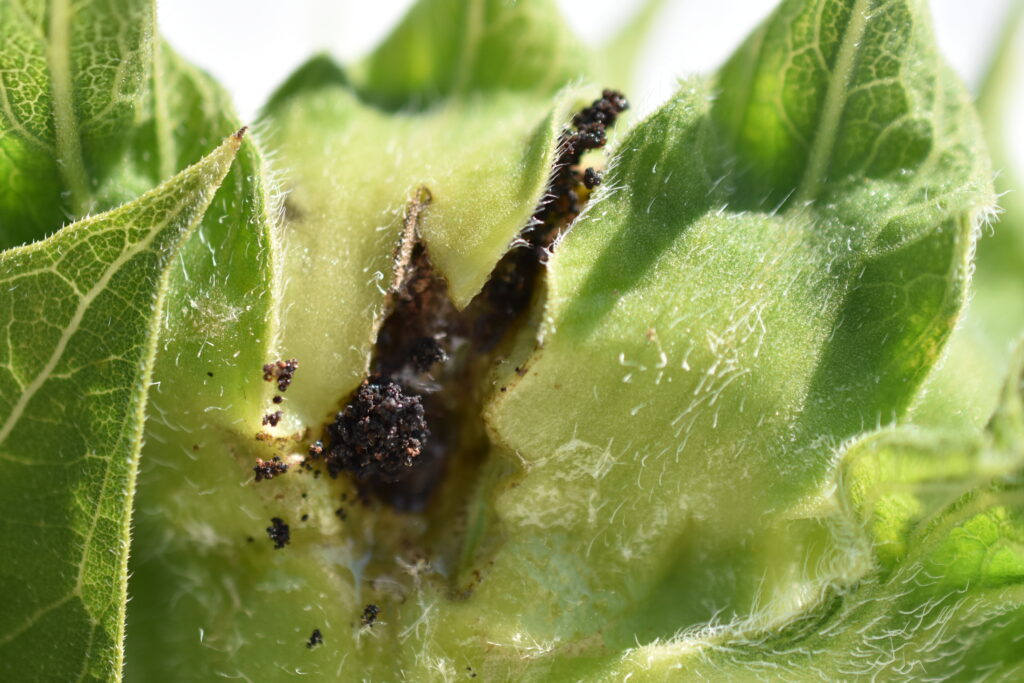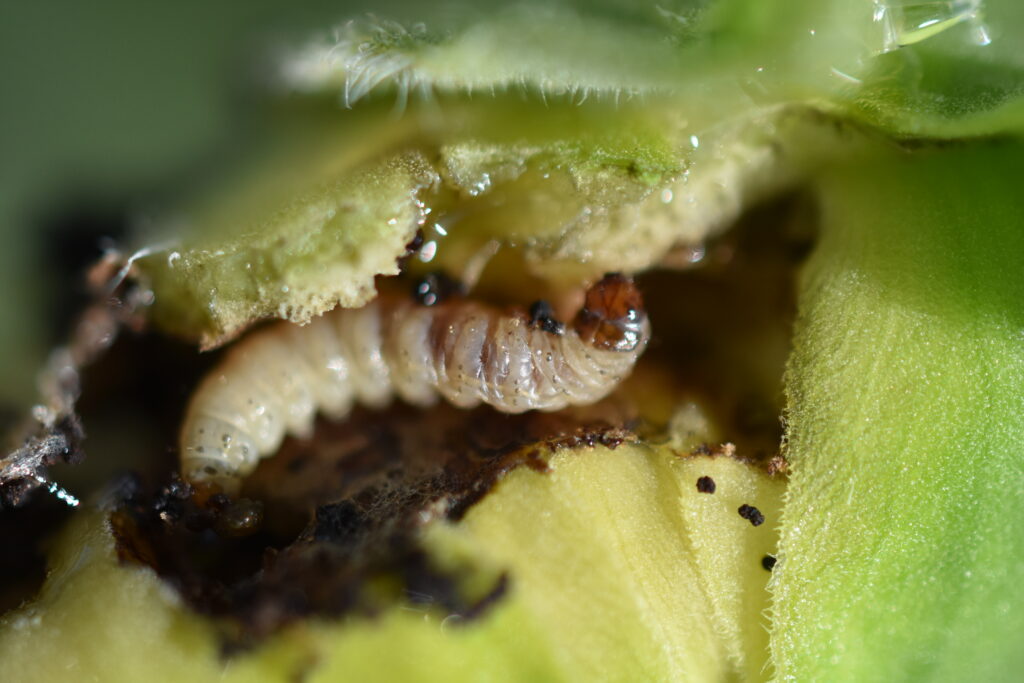Section Title
Sunflower bud moth identification and control
Crop Types
- Sunflower
Sunflower bud moth larvae have a cream-coloured body with a dark head capsule and are approximately one centimetre in length. Adult moths are greyish brown with two dark diagonal bands on each wing.
In Manitoba, there are two generations of sunflower bud moth produced each year. The initial infestation in mid-June is characterized by an entrance hole surrounded by black frass (insect excrement). By splitting the entry wound on the sunflower plant, the larva can likely be found a short distance into the tunnel they have burrowed. As larvae mature in these tunnels, they pupate inside the sunflower plant. Pupae then move towards the entry points in the plant, where adults can easily emerge and fly away.
While sunflower bud moth infestations are rarely economical, these early injuries they create in the sunflower leaf axil are open sites for disease entry later in the season. The tunnels can weaken the stalk and lead to broken plants as drydown nears. Pupae may also have been introduced to the sunflower plant near a developing bud, whereby larvae will burrow into the unopened bud, preventing proper head development. Pupae from the second generation in July and August occur more frequently in the pith areas of the head. Larvae will not normally feed on developing seeds, so minimal losses can occur in the secondary generation, though noticeable sunflower head malformations may be possible.
There is no established economic threshold for sunflower bud moth and no means of control. If heavier infestations are reported in a field, it is best to continue surveillance of that field for future disease concerns and employ management practices to decrease potential disease infections.
Reference page six of Insects Affecting Sunflower for more information and images of sunflower bud moth.
Additional resources
Manitoba Crop Alliance








